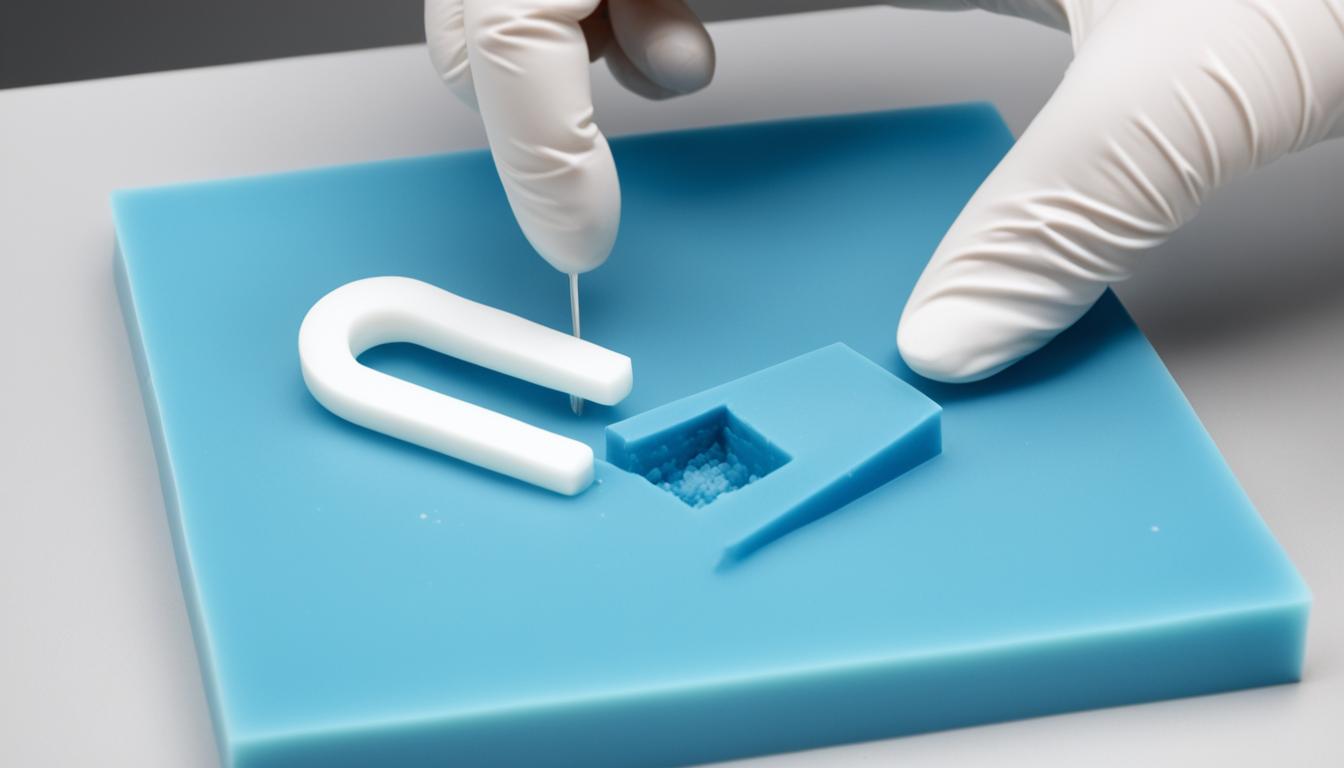
Silicone Mold Lifespan: How Long Does It Last?
When it comes to baking and crafting, silicone molds have become a popular choice for many. They offer versatility, easy release, and vibrant designs. However, understanding the durability of silicone molds and the factors that can influence their longevity is essential for users.
Silicone mold durability depends on several factors. The quality of the silicone used, the frequency of use, and proper maintenance all play a role in determining how long a mold will last. By understanding these factors, users can take the necessary steps to ensure their molds remain in good condition for extended periods.
Key Takeaways:
- The lifespan of a silicone mold is influenced by the quality of the silicone used, the frequency of use, and proper maintenance.
- Investing in high-quality silicone molds can result in a longer lifespan.
- Proper cleaning and storage practices can help preserve the integrity of silicone molds.
- Consider using mold release agents and avoid sharp objects that can damage the mold.
- Regularly inspecting and assessing the quality of silicone molds is crucial for longevity.
Factors Affecting Silicone Mold Lifespan
When it comes to maximizing the lifespan of your silicone molds, there are several key factors to consider. By implementing best practices for extending silicone mold life, following proper maintenance tips, and assessing mold quality, you can ensure that your molds remain in excellent condition for years to come.
Here are some effective ways to increase the lifespan of your silicone molds:
- Choose high-quality silicone molds: Investing in molds made from premium materials will significantly impact their durability and longevity. When purchasing silicone molds, consider the manufacturer’s reputation for quality and opt for molds that are specifically designed for your intended use.
- Follow proper mold usage and care instructions: Each silicone mold comes with specific guidelines for use and maintenance. It is important to thoroughly read and follow these instructions to avoid damaging the mold and compromising its lifespan. Be sure to clean the mold properly after each use and store it in a cool, dry place.
- Apply release agents: Utilizing appropriate release agents can help extend the life of your silicone molds by preventing sticking and minimizing wear and tear during demolding. Make sure to choose a release agent that is compatible with silicone and follow the manufacturer’s recommended application method.
- Avoid exposure to extreme temperatures and chemicals: Silicone molds are generally heat-resistant, but prolonged exposure to high temperatures can degrade their quality over time. Similarly, certain chemicals can cause corrosion or damage to silicone. Take precautions to protect your molds from extreme temperatures and avoid using harsh chemicals in their vicinity.
- Regularly inspect and assess mold condition: Periodically evaluate the condition of your silicone molds to identify any signs of wear, tear, or damage. Look for cracks, tears, or deformities that may affect the mold’s functionality or integrity. Promptly address any issues and consider retiring molds that are beyond repair.
- Consider mold reinforcement techniques: For molds that undergo frequent or rigorous use, reinforcing their structure can significantly increase their lifespan. Techniques such as adding support layers or incorporating reinforcing materials can help strengthen the mold and prolong its usability.
By following these best practices and implementing proper maintenance routines, you can ensure that your silicone molds serve you well for an extended period. Preserving their integrity through regular inspections and assessments will help you identify when it’s time to replace molds and continue producing high-quality results.
Conclusion
To maximize the lifespan of your silicone molds, it is crucial to understand their durability and implement best practices for maintenance and care. Numerous factors can impact the longevity of silicone molds, including the quality of materials used, the frequency and intensity of use, as well as the cleaning and storage methods employed.
By following a few simple tips, you can significantly extend the life of your silicone molds. Firstly, invest in high-quality molds that are made from durable silicone materials. Conduct a thorough quality assessment before purchasing to ensure their integrity and longevity. When using the molds, always follow the manufacturer’s instructions and avoid exposing them to extreme temperature changes, which can lead to premature wear and tear.
Proper maintenance and cleaning are also essential for preserving silicone mold integrity. After each use, carefully wash the molds with mild soap and warm water, avoiding abrasive materials that can damage the surface. Allow the molds to fully dry before storing them in a cool, dry place to prevent the growth of mold or mildew.
Ultimately, the durability of your silicone molds depends on the care and attention you give them. By implementing these best practices and taking proactive steps to protect and maintain your molds, you can ensure that they serve you well for an extended period, allowing you to create beautiful and intricate designs with ease.




